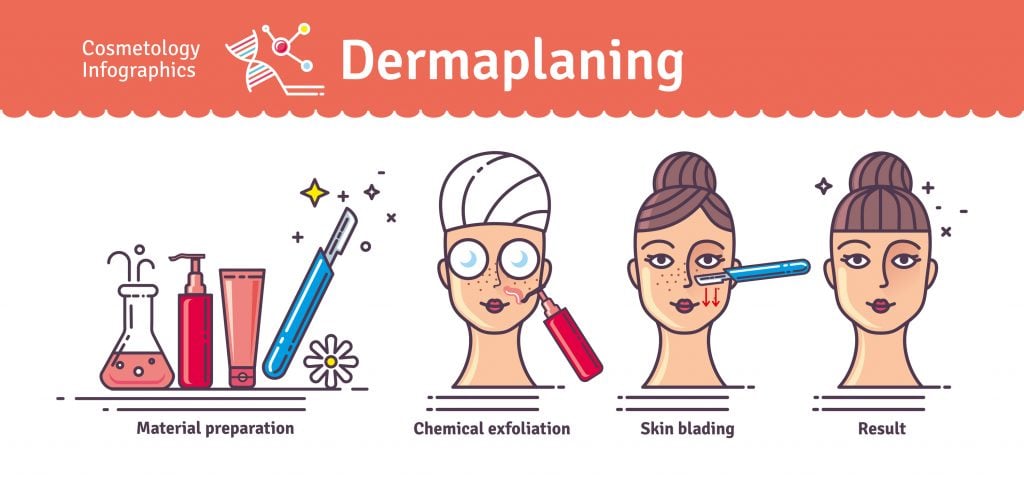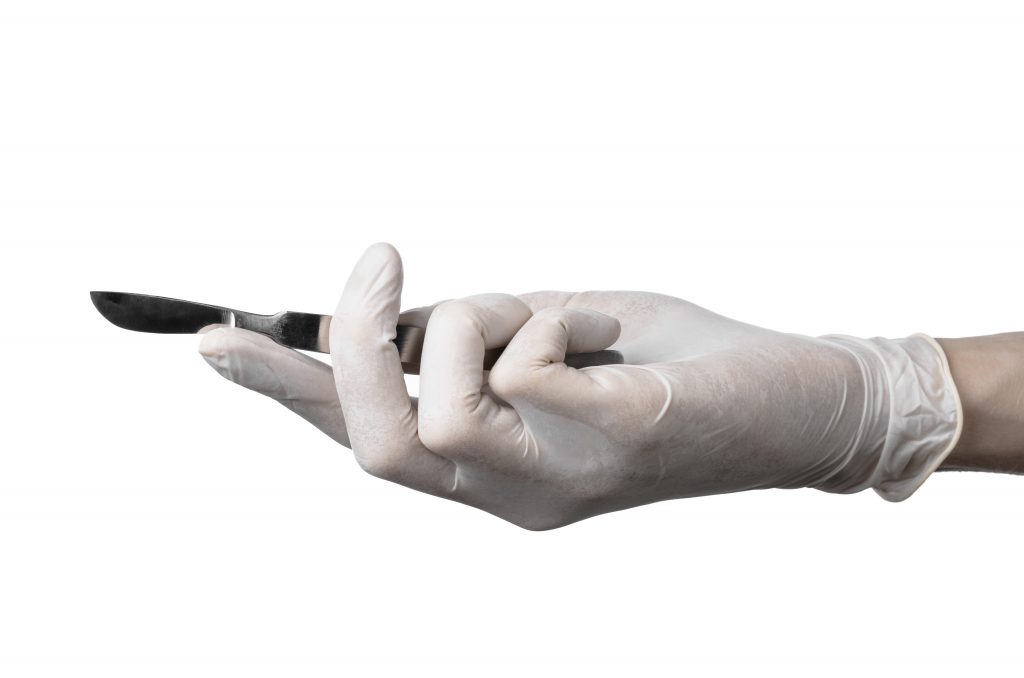Dermaplaning – Why handling sharps is best done by professionals
Dermaplaning is quickly gaining popularity in the beauty industry. While it is widely accepted to be a harmless beauty treatment, the use of sterile scalpel blades sometimes raises concerns with people who are unfamiliar with the procedure or try to do it at home.
What is dermaplaning?
Dermaplaning is a treatment that exfoliates the top layer of the epidermis. Put simply, a sterile scalpel blade is gently run along the skin’s surface to remove the top layer of dead skin and “peach fuzz”. This process can trigger skin cell regeneration, fade scarring, and make skin appear brighter and smoother.
What could go wrong?
As mentioned earlier, the use of a sterile scalpel blade can sometimes raise concerns with people who are unfamiliar with dermaplaning. Lacerations are what typically comes to mind, and are one of the main risks involved according to aesthetician; Kirstie Reese.
While this is a possibility, a trained professional is extremely unlikely to puncture the skin at all. An important detail pointed out by Lynne Girard (a medical aesthetician with 27 years’ experience) is that a customer should “… not talk during the treatment as they can risk the possibility of getting cut or nicked”.
Are there any after effects?
Industry professionals warn that after a dermaplaning treatment, your skin is far more sensitive and vulnerable. Because of this, it is important that dermaplaning is done with a sterile blade in a clean and controlled environment. To combat the sensitivity, it’s best to apply SPF 50+ sunscreen after a treatment, and be cautious of retinol (vitamin A) and glycolic acid which are often found in exfoliating serums.
Furthermore, some peoples’ skin can react badly to the treatment in general. People have reported outbreaks of acne, and even melasma as a result of dermaplaning. This is why it is important to talk to your beauty consultant before deciding on a treatment.
Can I do this at home?
A DIY home job is usually more attractive because of the lower costs. While inexpensive, over-the-counter devices are available for you to perform dermaplaning at home – these sharp devices can be misused. Instructions can be unclear or even neglected, meaning that safety features and precautions may not be utilised. This can cause undesirable results and even inflict a sharps injury which can leave permanent scars.
Industry professional Dr. Michael Someneek (plastic surgeon) recommends “people should be seeking a qualified technician to perform this procedure”. Professionals are trained on how to use and handle sharps making accidents and injuries far less likely than if the procedure was performed at home.
What does a professional do differently?
Beauty industry professionals that can perform a dermaplaning treatment range from plastic surgeons, to dermatologists, to aestheticians, to beauticians. They are equip with a safe, clean environment with sterilised medical-grade tools, safety procedures and safety devices. Using scalpel blade removers and neutral passing areas are just some of the employed practices that minimise the risk of unnecessary injuries to both the customer receiving the treatment and the practitioner performing it. All of these factors combine together to produce the best results from a treatment, and minimise sharps injuries and infections.
References
“Dermaplaning: Here’s How To Do It Correctly”
http://www.byrdie.com.au/women-shave-face-smooth-skin
“Cosmetics and Therapeutic Goods”
http://www.nicnas.gov.au/cosmetics-and-soaps/cosmetics-and-therapeutic-goods
“What’s Up With Dermaplaning? Here’s What Scalpel Facials Are Actually Doing to Your Face”
http://www.self.com/story/dermaplaning
“A Beginner’s Guide to Dermaplaning: What It Is, How It Works and Overall Benefits” – highya.com




You’ve got a very interesting article, I somewhat agree with your idea about dermaplaning and I agree that leave that to the expert when doing so. It may hurt your pocket than hurting yourself, just like we advise at restylane los angeles giving our client full satisfactory and safety.